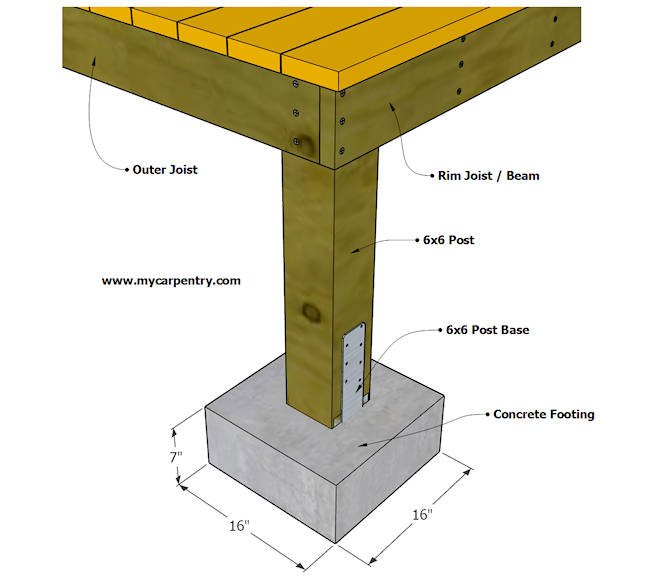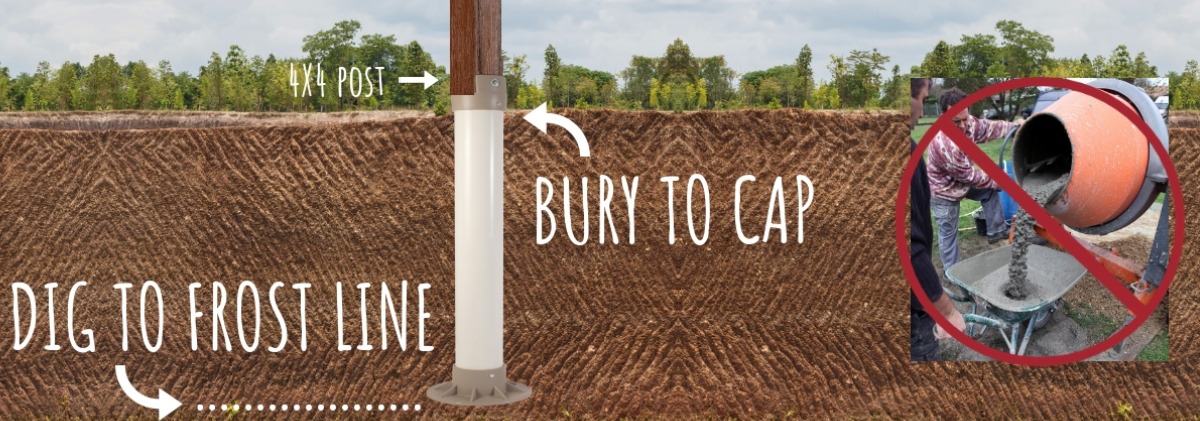Picking the Right Deck Footings for Stability and Durability
When it comes to developing a deck, among the most important choices you will certainly make is choosing the right footings for security and toughness. The long life and safety of your deck depend heavily on the kind of footings you pick, as they provide the vital assistance and security to hold up against the examination of time. With a myriad of options offered, it can be frustrating to identify which grounds are best matched for your details demands. In this discussion, we will certainly explore the numerous kinds of deck grounds, take into consideration the crucial elements to evaluate when choosing, and explore the advantages and disadvantages of various choices. By the end, you will certainly have a clearer understanding of the selections at hand and be better equipped to make an educated decision for your deck job.
Types of Deck Grounds
There are numerous sorts of deck footings that can be utilized, each offering unique benefits and factors to consider. One common kind of footing is the concrete pier ground. These footings consist of a cylindrical opening loaded with concrete, which provides a strong foundation for the deck blog posts. Concrete pier grounds are reasonably very easy to set up and use outstanding stability, making them a prominent selection for many deck projects.
These footings are set up by screwing them right into the ground, which creates a safe and secure foundation for the deck. They also permit for very easy adjustment and progressing of the deck if needed.
Alternatively, some contractors go with precast concrete grounds. These footings are constructed from long lasting concrete and be available in various sizes and shapes to accommodate various deck layouts. Precast concrete footings are practical to install and offer a steady base for the deck framework.
Ultimately, an additional option is the post-in-anchor ground system. This kind of ground entails driving a steel anchor right into the ground and attaching it to the deck article. It offers flexibility in regards to placing the deck messages and is suitable for decks with light-weight structures.
When choosing the appropriate sort of deck ground, it is necessary to take into consideration variables such as dirt problems, deck lots, and local building ordinance (Deck Footings). Consulting with a specialist service provider or architectural engineer can help guarantee the appropriate footing is chosen for a secure and steady deck
Aspects to Consider When Selecting Grounds
When selecting the proper grounds for a deck, it is vital to meticulously consider numerous factors such as dirt problems, deck lots, and adherence to local building ordinance. These elements play a significant role in ensuring the stability and longevity of the deck framework.
The kind of dirt on which the deck will certainly be built establishes the kind of grounds called for. On the various other hand, decks constructed on clay or large soils may need grounds that can fit the dirt's propensity to expand and contract.
An additional essential variable is the deck tons. The weight of the deck, consisting of the materials utilized and any kind of potential real-time lots such as furniture or events, must be taken into consideration when selecting grounds. The footings need to be developed to bear the weight of the deck and disperse it equally to prevent any structural issues or failings.
Lastly, adherence to regional building regulations is paramount. Building ordinance vary from area to area, and it is essential to abide by the details needs set by the local authorities. Deck Footings. These codes make sure that the deck is built safely and meets the essential standards for architectural integrity and load-bearing ability
Concrete Grounds: Pros and Disadvantages

Concrete grounds offer a number of benefits and disadvantages when utilized as the structure for a deck. On the silver lining, concrete footings offer excellent stability and toughness. Concrete is a inflexible and strong product that can support heavy tons and withstand various climate condition. It also has a long life expectancy, making it a trustworthy choice for long-term use.
An additional benefit of concrete footings is their adaptability. They can be poured right into various forms and dimensions to accommodate various deck styles and setups. Concrete grounds can be tailored to fit the details demands and requirements of click resources the deck structure.
However, there are likewise some disadvantages to making use of concrete grounds. One significant disadvantage is the price and labor associated with their installation. Concrete footings call for excavation and frequently need the support of hefty machinery. This can boost the general expense of the deck job and may need specialist aid.

Helical Piers Vs. Sonotubes: Which Is Much better?
In thinking about the structure choices for a deck, the contrast between helical piers and sonotubes is critical in determining the superior option. They are twisted right into the ground making use of hydraulic machinery, providing a durable and stable foundation for the deck.
The helical plates on the piers create a solid grip with the dirt, stopping any movement or changing of the deck. Sonotubes, on the various other hand, count solely on the concrete loading for stability, which might not supply the exact same degree of strength and resistance.
In regards to installation, helical piers are fairly easier and faster to set up contrasted to sonotubes. The hydraulic machinery utilized to turn the piers into the ground makes certain a quick and reliable process. Sonotubes, on the various other hand, need digging holes and putting concrete, which can be lengthy and labor-intensive.
Additionally, helical piers are an even more flexible alternative. They can be utilized in numerous dirt conditions and can be changed or enhanced if required. Sonotubes, on the other hand, may require added support, such as rebar, in particular soil conditions or locations with high tons demands.
Selecting the Right Footings for Your Deck's Dimensions
For ideal architectural integrity, it is necessary to thoroughly pick the appropriate footings that straighten with the dimensions of your deck. The measurements of your deck, including its size, elevation, and length, play a significant function in establishing the type and size of grounds needed.
When picking footings for your deck, it is essential to take official source into consideration the load-bearing capability of the dirt. The weight of the deck, combined with the weight of any type of furniture or individuals on it, applies a significant pressure on the footings (Deck Footings). Consequently, it is critical to choose footings visit the site that can appropriately sustain this weight without moving or sinking with time.
Bigger decks with better dimensions call for larger grounds to supply sufficient security and support. The form of the footings, whether they are rounded or square, depends on the layout and design of the deck.
Conclusion
In verdict, selecting the best deck footings is essential for making sure stability and sturdiness. Aspects such as the sort of grounds, the deck's dimensions, and the advantages and disadvantages of various alternatives need to be considered. Concrete grounds supply toughness and long life, yet might be a lot more taxing and costly to install. Helical piers and sonotubes have their very own advantages and negative aspects. Inevitably, choosing the appropriate footings for your deck's certain requirements is essential for a successful and durable structure.
These footings consist of a cylindrical opening loaded with concrete, which provides a strong structure for the deck blog posts. Concrete pier grounds are reasonably very easy to mount and offer outstanding stability, making them a prominent option for numerous deck jobs.
Precast concrete footings are practical to set up and supply a steady base for the deck structure.
It provides versatility in terms of positioning the deck messages and is suitable for decks with lightweight frameworks.
Concrete grounds supply numerous benefits and negative aspects when made use of as the structure for a deck.